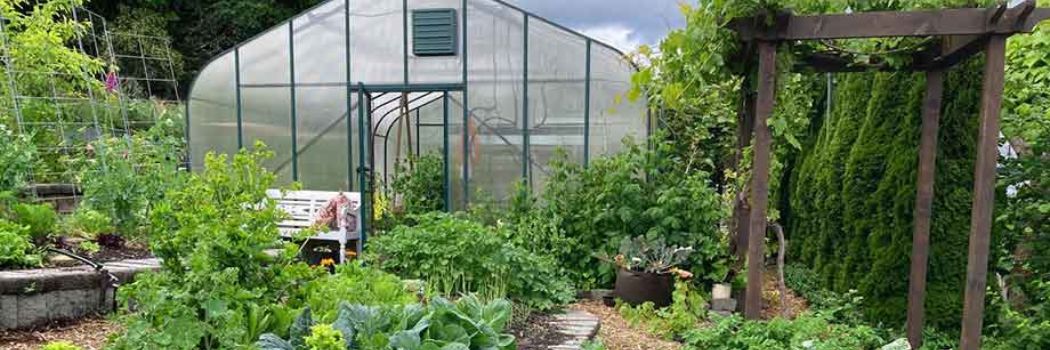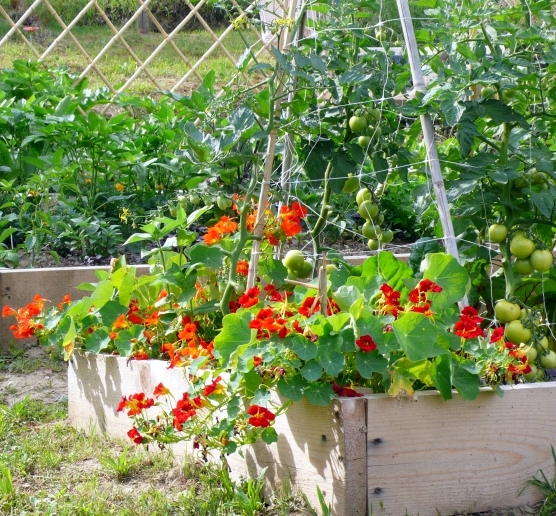Perilla Companion Plants: The Ultimate Guide To Growing Shiso With Other Herbs And Vegetables
Perilla Companion Plants: The Ultimate Guide to Growing Shiso with Other Herbs and Vegetables
Shiso, also known as beefsteak plant or Japanese mint, is a flavorful herb that can be used in a variety of dishes. It is native to East Asia and has been cultivated for centuries. Shiso plants are annuals, which means they will only live for one growing season. However, they are relatively easy to grow and can be started from seed indoors or outdoors.
One of the best things about shiso is that it can be companion planted with other herbs and vegetables. Companion planting is a gardening practice that involves planting certain plants together to promote their growth and deter pests. When choosing companion plants for shiso, there are a few things to keep in mind.
First, shiso prefers full sun or partial shade. It also needs well-drained soil that is rich in organic matter. If you are planting shiso in a pot, make sure the pot has drainage holes.
Second, shiso is a nitrogen-fixing plant. This means that it can help to improve the nitrogen content of the soil around it. This can benefit other plants in your garden, as nitrogen is an important nutrient for plant growth.
Third, shiso has a strong scent that can repel some pests. For example, it can help to keep mosquitoes away.
With these factors in mind, here are some of the best companion plants for shiso:
- Basil: Basil and shiso are both members of the mint family, and they complement each other well. They both have strong flavors, but they don't overpower each other. Basil can help to repel pests, such as aphids and whiteflies.

- Carrots: Carrots and shiso can help each other to grow. Carrots help to improve the drainage of the soil, which can benefit shiso. Shiso can help to repel carrot flies.

- Cucumbers: Cucumbers and shiso can help each other to thrive. Shiso can help to repel cucumber beetles. Cucumbers can help to provide shade for shiso, which can help to prevent it from getting too hot.

- Lettuce: Lettuce and shiso can help each other to grow. Lettuce helps to suppress weeds, which can benefit shiso. Shiso can help to repel aphids and other pests that can damage lettuce.

- Peas: Peas and shiso can help each other to grow. Peas help to improve the nitrogen content of the soil, which can benefit shiso. Shiso can help to repel aphids and other pests that can damage peas.

- Tomatoes: Tomatoes and shiso can help each other to grow. Shiso can help to repel whiteflies and other pests that can damage tomatoes. Tomatoes can help to provide shade for shiso, which can help to prevent it from getting too hot.

These are just a few of the many companion plants that can be grown with shiso. When choosing companion plants, it is important to consider the specific needs of each plant. However, by following the tips above, you can create a thriving garden with shiso and other herbs and vegetables.
Perilla, also known as shiso, is a member of the mint family and is native to Southeast Asia. It is a versatile herb that can be used in both cooking and herbal medicine. Perilla plants are relatively easy to grow and can be found in most garden centers.
When choosing companion plants for perilla, it is important to consider the plant's needs. Perilla prefers full sun and well-drained soil. It is also a heavy feeder, so it is important to fertilize it regularly.
Some good companion plants for perilla include:
- Basil: Basil is another member of the mint family and is a good companion plant for perilla because they both have similar growing requirements. Basil can help to repel pests and attract pollinators to perilla plants.
- Tomatoes: Tomatoes and perilla are both susceptible to the same pests and diseases, so planting them together can help to protect each other. Perilla can also help to improve the flavor of tomatoes.
- Cucumbers: Perilla can help to repel cucumber beetles, which are a common pest of cucumbers. It can also help to improve the flavor of cucumbers.
If you are interested in learning more about perilla companion plants, I recommend visiting Gardenia Inspiration. This website has a comprehensive list of companion plants for perilla, as well as information on how to grow and care for perilla plants.
FAQ of perilla companion plants
- What are some good companion plants for perilla?
Perilla is a relatively easy-to-grow herb that can be paired with a variety of other plants. Some good companion plants for perilla include:
* Basil: Basil and perilla are both members of the mint family, and they can benefit each other by attracting pollinators and deterring pests.
* Carrots: Perilla can help to repel carrot flies, which can be a major pest for carrots.
* Cucumbers: Perilla can help to deter cucumber beetles, which can damage cucumber plants.
* Lettuce: Perilla can help to repel aphids, which can be a major pest for lettuce plants.
* Tomatoes: Perilla can help to repel nematodes, which can damage tomato plants.
- How far apart should perilla plants be spaced?
Perilla plants should be spaced 10 to 12 inches apart. This will give them enough room to grow and spread their roots.
- How much sun does perilla need?
Perilla needs full sun to partial shade. In hot climates, it may benefit from some afternoon shade.
- What type of soil does perilla prefer?
Perilla prefers well-drained soil that is rich in organic matter. The soil pH should be between 5.5 and 6.5.
- How often should perilla be watered?
Perilla should be watered regularly, but the soil should not be allowed to become soggy. Water deeply once a week, or more often during hot, dry weather.
Image of perilla companion plants
5 different images of "perilla companion plants" from Pinterest:
- Shiso and tomatoes. Perilla and tomatoes are both sun-loving plants that can be grown together in the same garden. Perilla can help to deter pests from tomatoes, and tomatoes can provide perilla with some shade.

- Shiso and basil. Shiso and basil are both members of the mint family, and they can be grown together in the same garden. They both have similar growing requirements, and they can help to deter pests from each other.

- Shiso and cucumbers. Perilla and cucumbers can be grown together in the same garden, as they both enjoy full sun and well-drained soil. Perilla can help to deter pests from cucumbers, and cucumbers can provide perilla with some shade.

- Shiso and eggplants. Perilla and eggplants can be grown together in the same garden, as they both enjoy full sun and well-drained soil. Perilla can help to deter pests from eggplants, and eggplants can provide perilla with some shade.

- Shiso and beans. Perilla and beans can be grown together in the same garden, as they both enjoy full sun and well-drained soil. Perilla can help to deter pests from beans, and beans can provide perilla with some nitrogen.

Post a Comment for "Perilla Companion Plants: The Ultimate Guide To Growing Shiso With Other Herbs And Vegetables"